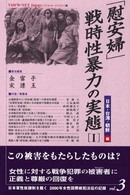- ホーム
- > 洋書
- > 英文書
- > Literary Criticism
Full Description
The book presents unique flowering of Urdu ghazal as a by-product of India's composite culture that evolved from intermixing of Indian and alien value systems. This never before narrated story of the evolution of Urdu ghazal is documented in eight chapters divided into three parts. It explores a variety of influences, including Sufism, Bhakti movement, and infusion of Rekhta and Persian languages and culture. The book explains classical ghazal forms that blossomed from the seeds sown by Amir Khusrau in the fourteenth century to great heights of literary excellence achieved during the next three hundred years, notably in the works of great poets like Mir and Ghalib. Different socio-political and cultural demands of changing times are expounded towards the end, primarily showing how ghazal provided new creative models to deal with literary movements like progressivism, modernism, and postmodernism. It is a work of painstaking research conducted by eminent Urdu scholar and author Professor Gopi Chand Narang over a very long period. The book includes sample works of thematically related poets. The reader will especially appreciate extended coverage of pioneering innovators of the twentieth-century like Firaq Gorakhpuri and Faiz Ahmed Faiz, and postmodern poets like Gulzar and Javed Akhtar.
Contents
Preface
Part 1: The Cultural Landscape
The Genesis and Evolution of India's Composite Culture
Part 2: Urdu Ghazal: The Classical Foundation
The Concept of Love
The Concept of Beauty
The Concept of Self
The Rhetorical Aspects of Urdu Ghazal
Part 3: The Twentieth-Century Panorma
The Neoclassicists
The Progressives
The Modernists and The Postmodernists
Epilogue
Bibliography
Index
About the Author and the Translator







